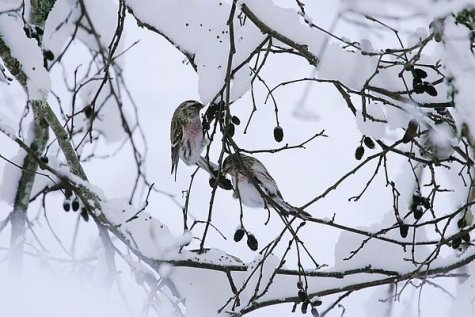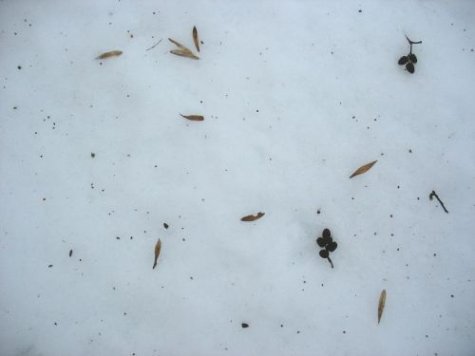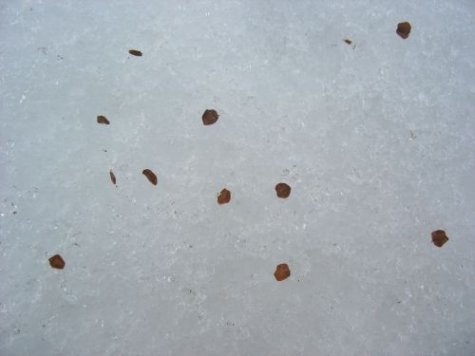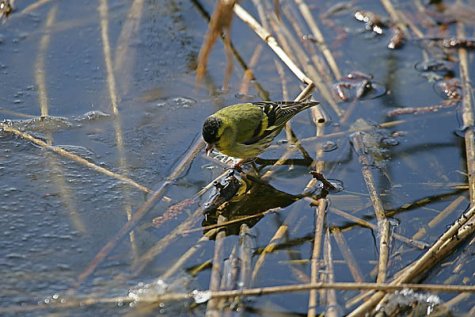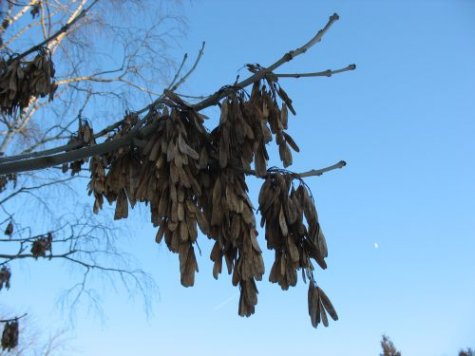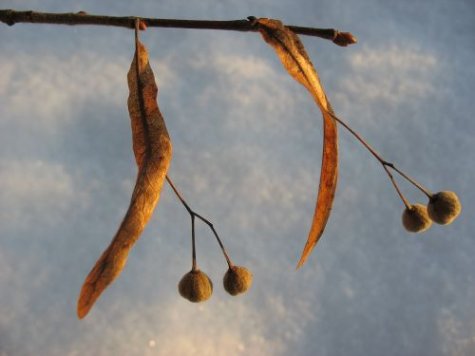Wintertime Seed Shedders
Text: Vello Keppart
Photos: Arne Ader ja Vello Keppart
Translation: Liis from Forum
Redpolls feed on the seeds of alders.
Of native Estonian trees alder, ash and linden shed their seeds - that ripen in October - during winter.
Ash and alder seeds, and alder multiple fruits (cones) scattered on the snow.
Alders have their female flowers in short catkins that after the flowering in early spring develop into egg-shaped multiple fruits resembling small cones. The seeds are shed and scatter from late autumn until early spring; most of the seeds (small nutlets) fall on the snow in winter, helped on by the redpolls and siskins that feed on the seeds.
Multiple fruits of grey alder opening in January.
Gray Alder (hall lepp; also arulepp, valge lepp, and other common names ). Until the leaves fall, the cone-like, multiple fruits on the tree are green and the bracts closed. Later the fruits darken, the bracts lignify and gradually open. The seed is a small two-winged nutlet.
The seeds of grey alder are tiny winged nutlets.
Alder, Black alder (sanglepp; also lodulepp, must lepp, and other common names). Most seeds are shed already when the leaves fall, but occasional seeds still drop during winter and until spring. The seed is a tiny nutlet, but here the wings are wooden and hardly discernible. The seeds spread in spring with the waters from melting snow and rain.
Siskin looking for alder seeds in lake water.
Ash (saar; also saarnapuu) is the only representative of the Oleaceae, Olive family, in the native Estonian flora. The seeds are small nutlets with a twisted (convolute) wing. They fall on the snow during winter.
The seeds of ashes, ash keys, ripen in late autumn, and during winter it is easy to recognize trees that have carried female flowers.
Lime tree, linden (pärn; also lõhmus, niinepuu, pähn). The seed clusters of small rounded nutlets carry a long flower bract. They drop from the twigs in winter and the wind carries them away from the tree. However, new growth of common lime from seedlings occurs only seldom in nature in Estonia.
Large-leaved lime is cultivated in urban areas. Its nutlets are larger, downy and five-ribbed.

